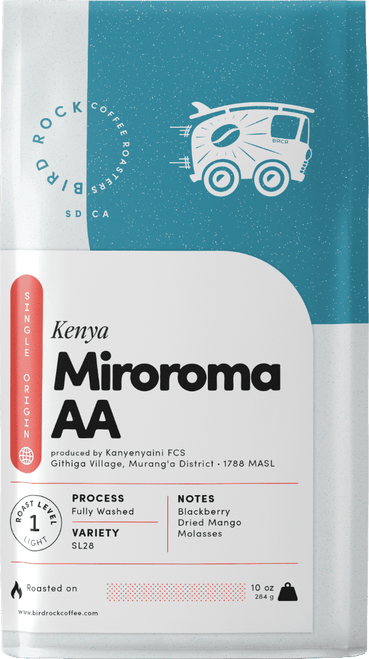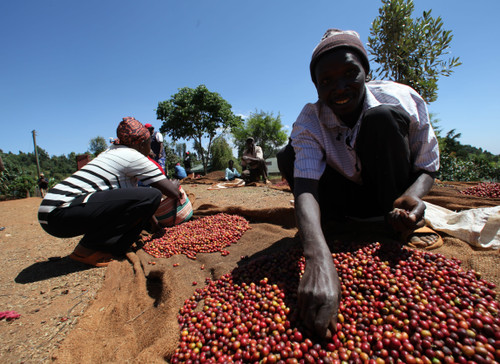
- Blackberry
- Dried Mango
- Molasses






Description
- Miroroma Factory Coffee Farming History
Miroroma Factory's coffee farming legacy is deeply rooted in generational land inheritance and the colonial agricultural reforms of the mid-20th century. During the 1950s, the British colonial administration implemented the Swynnerton Plan, a policy designed to boost agricultural productivity among native Kenyans. As part of this initiative, coffee farming was introduced and encouraged across regions like Murang’a.
The plan led to the consolidation of landholdings, allowing families to cultivate larger and more manageable plots. This shift not only increased productivity but also set the foundation for long-term family-based farming. Many small-scale farmers in Miroroma region inherited these consolidated farms from their great- grandparents, which has helped sustain coffee production over generations.
Today, Miroroma Factory has 1000 active contributing farmers these family-owned smallholder farms remain central to Miroroma’s local economy and cultural identity. With ongoing efforts to revitalize the coffee sector through sustainable practices—such as organic farming, soil regeneration, and value-added processing—the community continues to demonstrate remarkable resilience and adaptability in the face of changing agricultural and economic landscapes.
- Process Description
After a meticulous coffee cherry hand sorting the coffee is pulped, then fermented overnight to break down the sugars, before traveling through channels to the soaking tank where the coffee is carefully cleaned, soaked and spread out on the raised drying tables.
Time on the drying tables depends on climate, ambient temperature and total production volume undergoing processing. Drying can take from 7 to 15 days in total. Continuous sorting and hand turning of the parchment takes place throughout the drying process.
- AA Grade
Kenyan coffees are classified by size. AA beans are the largest size. AA grade coffees are those that are 17/18 screen size, meaning that they are larger than 7.2 millimeters.
- Variety Background
Kenya's reputation for exceptional coffee traces back to 1922, when the British colonial government, intrigued by the quality of local coffee, commissioned Scott Agricultural Laboratories to conduct research. The goal was to identify the most promising coffee varieties in terms of yield, quality, and resistance to drought, pests, and disease. Scientists selected 42 trees from various origins and assigned each an "SL" (Scott Labs) classification number.
This work led to the development of two superior varieties—SL28 and SL34—which now account for nearly 90% of Kenya’s coffee production. Later, in response to a severe outbreak of coffee berry disease and leaf rust in 1968, the Ruiru 11 hybrid was developed and released commercially in 1986 to offer improved disease resistance.